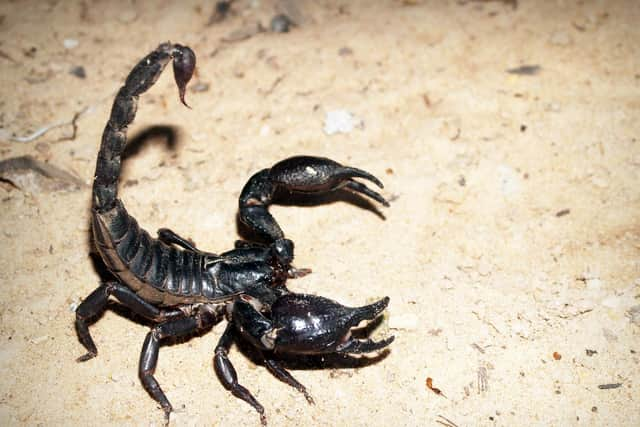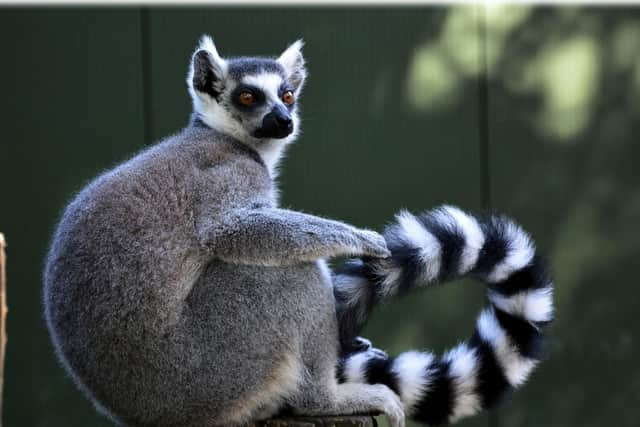Exotic Pets on the rise in Dacorum – are you living next door to some of the world’s deadliest creatures?
and live on Freeview channel 276
A new survey conducted by Born Free has revealed that nearly 4,000 dangerous wild animals are being privately kept in Great Britain – 104 of which are living in Hertfordshire.
The international wildlife charity is calling on the UK Government to immediately review the law and put a stop to some of the world’s most remarkable, but often deadly, creatures being kept as ‘pets’ in unsuitable captive conditions.
Advertisement
Advertisement
Born Free’s research reviewed the number of Dangerous Wild Animal (DWA) Act licences granted by local authorities in 2020 across England, Scotland and Wales, and the variety of species being privately kept.


The international wildlife charity is calling on the UK Government to immediately review the law and put a stop to some of the world’s most remarkable, but often deadly, creatures being kept as ‘pets’ in unsuitable captive conditions.
In Dacorum, Born Free's research found licences granted for some of the following wild animals residing in the area:
> 1 Beaded Lizard
> 4 Death Stalker scorpion


> 1 Fat tailed-scorpion
> 3 Gila Monster
> 1 Recluse Spider
> 15 Venomous Snake.
Local authorities in Hertfordshire revealed that the licences granted cover 104 dangerous wild animals residing in the area, of which there are at least:
Advertisement
Advertisement
> 15 venomous snakes including Saw-scaled vipers, a Chinese spitting cobra, and a Western diamondback rattlesnake
> 4 crocodilians including Mississippi alligators and Spectacled caimans
> 67 cats including 10 Pumas, 2 Amur leopards, 3 Cheetahs, a Jaguar and a Snow Leopard
> 5 scorpions including Death stalkers and a Fat-tailed Scorpion
> 1 Brown recluse spider
Advertisement
Advertisement
> 4 venomous lizards including Gila monsters and a Beaded lizard
> 4 Grey wolves
> 2 Ring-tailed lemurs
> 2 Bactrian camels.
Shockingly, the entire combined data across all authorities highlighted that a total of 210 DWA licences were granted for the keeping of 3,951 individual wild animals including:
- 320 wild cats (including 61 big cats – 11 lions, 8 tigers, 11 leopards, 18 pumas, 10 cheetahs, 2 ligers and 1 jaguar)
- 274 primates (including over 150 lemurs)
- 158 crocodilians
- 508 venomous snakes (including 57 diamondback rattlesnakes)
- 332 scorpions
- 106 venomous lizards
- 2 elephants.
Advertisement
Advertisement
Other species on the DWA list that are being kept as pets or in private collections in the UK include zebras, camels, fossa (a kind of civet), hyaena, sun bears, wolves, and otters.
Dr Mark Jones, Veterinarian and Born Free’s Head of Policy, said: “Born Free has been collating and analysing DWA data for over 20 years.
"Since the millennium the wild animal welfare and conservation charity has seen a dramatic increase in the number of exotic pets in private ownership, including a 94% increase in the number of venomous snakes, 57% increase in wild cats, 198% increase in crocodilians and over a 2000% increase in scorpions.
"However, these figures are likely to represent only the tip of the iceberg. They only record those animals being kept and registered with a DWA licence. Born Free believes that many additional dangerous wild animals are being kept without a licence.”
Advertisement
Advertisement
Currently, under the Dangerous Wild Animals Act 1976, anyone in Britain can keep a dangerous wild animal as long as they obtain a licence from their Local Authority.
The licencing process requires the applicant to demonstrate that their animals are properly contained so as to prevent escape and protect the public, but this does little to ensure the welfare of the animals or the protection of the owner or anyone else visiting the property.
While changes have been made to the schedule, Born Free is highlighting the fact that the Act itself has not been reviewed substantially for more than 40 years.
This means, for example, that species such as Komodo dragons, other large monitors, and large constrictor snakes are not included on the schedule, despite the fact that they could pose a serious risk to their owners, and to members of the public, should they escape.
Advertisement
Advertisement
Dr Mark Jones commented: “It is unbelievable that, in this day and age, so many dangerous animals, including big cats, large primates, crocodiles and venomous snakes, are in private ownership in the UK.
"Increasing demand for all kinds of wild animals as exotic pets puts owners and the wider public at risk of injury or disease. It also results in serious animal suffering, and the demand increases the pressure on many wild populations which are often already under threat.”
Just last year a hybrid Savannah cat escaped in Hampstead, London, while a seven-foot-long Boa constrictor appeared in someone’s back garden and then turned on its rescuer biting his hand and wrapping itself around his wrist on the Isle of Sheppey.
These are just a handful of cases that have been reported. In fact, records held by the RSPCA report that their specially-trained exotics officers rescued over 4,000 exotic animals in 2018 alone.
Advertisement
Advertisement
Due to the nature of the animals, most owners fail to report escapes or attacks for fear of the animal being removed or their licence revoked.
Mark added: “The UK likes to claim to be at the forefront of efforts to protect nature and improve the welfare of animals, yet our legislation governing the keeping of and trade in exotic pets is woefully outdated.
"While the Government’s recent proposal to ban the keeping of and trade in primates as pets is a welcome first step, there are many other species that need to be protected from this form of exploitation.
"The Dangerous Wild Animals Act should be overhauled as a matter of urgency, in order to phase-out the private keeping of and trade in those species that clearly don’t belong in people’s homes.”
Advertisement
Advertisement
To find out what dangerous animals are living in other counties across the UK you can use Born Free’s interactive map on their website.
A new ITV documentary on dangerous wild animals in the UK is coming soon.